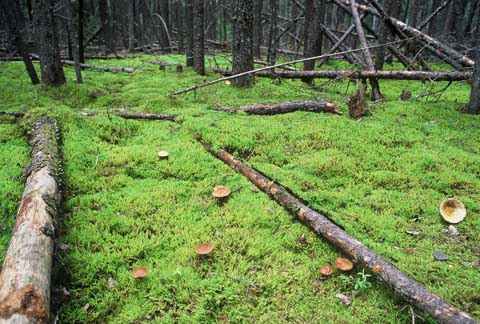
Department of Physical and Environmental Sciences
University of Toronto at Scarborough
1265 Military Trail
Toronto, ON
M1C 1A4
Phone: 416-287-7221 (office)
Phone: 416-287-7223 (lab)
Fax: 416-287-7279
Email: fulthorpe@utsc.utoronto.ca
Research Interests
 The ability of bacteria to remove toxic organic compounds from soils, waters and wastes of various kinds is under-appreciated by the public but it is critical to industries, agriculture and ecosystem services alike. Bacterial genes for the breakdown of man-made and toxic chemicals have been found in soils and industrial sites, as have various genetic elements that can disperse and rearrange them into novel pathways. However, other sources of such useful genes remain to be explored and a promising area is the rich diversity of bacteria than live commensally within plant tissues. Novel mobile elements that may play important roles in rearranging genes into novel operons are appearing in the vast new sequence data generated on bacteria from different environments daily. My research program concerns itself with both of these frontiers – the search for novel catabolic genes and the understanding of the mechanisms by which new capabilities arise and are spread between bacteria.
The ability of bacteria to remove toxic organic compounds from soils, waters and wastes of various kinds is under-appreciated by the public but it is critical to industries, agriculture and ecosystem services alike. Bacterial genes for the breakdown of man-made and toxic chemicals have been found in soils and industrial sites, as have various genetic elements that can disperse and rearrange them into novel pathways. However, other sources of such useful genes remain to be explored and a promising area is the rich diversity of bacteria than live commensally within plant tissues. Novel mobile elements that may play important roles in rearranging genes into novel operons are appearing in the vast new sequence data generated on bacteria from different environments daily. My research program concerns itself with both of these frontiers – the search for novel catabolic genes and the understanding of the mechanisms by which new capabilities arise and are spread between bacteria.
At the molecular level work has zeroed in on a representative 3 chlorobenzoate degrader – Burkholderia phytofirmans OLGA172 “OLGA” – isolated from a Russian forest. OLGA has proven to be a plant growth promoting strain that can live endophytically. Students Jin, Goordial, and Ricker contributed to the discovery that the key degradative genes in OLGA are located downstream from a novel genetic element called a RIT (Recombinases in Trio) element that may have contributed to the catabolic operon acquisition and/or its spread.
At the level of composite organisms, bacterial endophytes are the focus. The internal root, stem and leaf tissues of most plants harbour high numbers of bacterial endophytes (BE) – strains of non-pathogenic bacteria that are commensal or beneficial. They face entirely different conditions and stressors than do soil bacteria, and because of this they represent a new frontier for the study of novel catabolic pathways and means of gene re-assortment. Organic toxin catabolism is understudied in this group although is receiving increasing amounts of attention due to the potential for endophytes to contribute significantly to phytoremediation processes. In spite of the proven potential of endophytes for practical contaminant degradation, our understanding of the genetic determinants and carriers for these important traits is preliminary.
